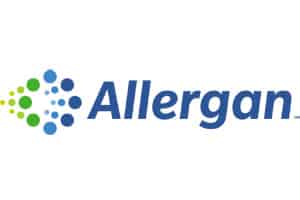 Allergan has reported additional phase III results for its oral CGRP inhibitor ubrogepant, setting up a regulatory filing in the US next year.
Allergan has reported additional phase III results for its oral CGRP inhibitor ubrogepant, setting up a regulatory filing in the US next year.
The positive read-out from its second pivotal trial for the acute treatment of a migraine attack showed a 50mg dose of ubrogepant was more likely to achieve a statistically significant reduction in pain two hours after administration – and another ‘most bothersome symptom’ (MBS), such as sensitivity to light or loud sounds or nausea – compared to placebo.
A lower 25mg dose also reduced pain but missed the mark on the MBS measure, according to Allergan, although it did show a trend towards improvement compared to the control group.
The company has reiterated that it is preparing to file the drug next year in the US, armed with the new data and an earlier study which showed significant efficacy across both endpoints for 50mg and 100m doses of the drug.
CGRP-targeting drugs look set to be the next wave of innovation in migraine treatment, with four companies vying for approval of intravenous or injectable candidates to be given either every month or every three months to try to prevent migraines occurring. Allergan’s drug is in the lead among a new group of orally-acting candidates – known collectively as ‘gepants’ – for acute use, in other words to try to provide relief of symptoms when an attack is already underway.
Novartis and Amgen are in pole position among the injectable CGRP-targeting drugs, with their Aimovig (erenumab) already filed and expected to gain FDA approval by May 17.
In Allergan’s new ACHIEVE II study, ubrogepant provided freedom from pain after two hours in 20.7% of the 25mg group and 21.8% of the 50mg group, compared to just over 14% of placebo-treated patients. The most bothersome symptom was relieved at that timepoint in 38.9% of the high dose group, 34.1% of low-dose patients and 27.4% of those on placebo.
The CGRP inhibitors offer hope to patients with severe chronic migraine who can’t get relief from the current array of therapies, which consists of pain-killing drugs, triptans and repurposed medicines such as the anticonvulsant topiramate or Allergan’s biggest and best-known product, Botox.
Analyst David Maris at Wells Fargo said Allergan’s new drug seems to offer triptan-like pain relief with an improved safety profile, and could be an option for an estimated four million people in the US with migraine who do not respond to or cannot tolerate triptan drugs, with blockbuster sales potential.
There were a few cases of raised aminotransferase levels (10 across the two studies at last count) – a potential market for liver toxicity – but according to Allergan are not judged to have been drug-related.
Ubrogepant’s nearest rival is Biohaven’s late-stage candidate rimegepant, which reported results from its phase III programme in March.
Allergan’s efforts to extend its migraine franchise suffered a setback when its inhaled drug Semprana (dihydroergotamine mesylate) was turned down by the FDA three times as an acute treatment for the disorder because of manufacturing issues. The programme is no longer listed in the company’s R&D pipeline.




